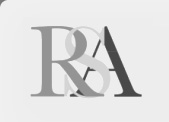42nd ASECS Annual Meeting
March 17 – 20, 2011, Vancouver, BC
Proposals for papers should be sent directly to the seminar chairs no later than 15 September 2010. Please include your telephone and fax numbers and e-mail address. You should also let the session chair know of any audio-visual needs and special scheduling requests. We actively encourage presentations by younger and untenured scholars.
There are a selection of panels of interest to art historians detailed below for full details of all panels and how to submit a paper please see the ASECS website http://asecs.press.jhu.edu/
Panels of interest to art historians include:
“Art Before Nationalism” (Historians of Eighteenth-Century Art and Architecture) Douglas Fordham and David Ehrenpreis
The concept of nationalism is often associated exclusively with modern state formation and the push for popular sovereignty that accompanied the American and French revolutions during the last quarter of the eighteenth century. But how are we to interpret the shifting attitudes toward the state in other periods and/or in other places? This session seeks papers that explore the relationship between visual art and the concept of nationhood at a variety of moments and geographic locations throughout the long eighteenth century. Papers could address this relationship through a focused examination of individual works of art, aesthetic theories, or broader frames of inquiry. Relevant questions might include: Has there been a tendency to read 19th century notions of nationhood and nationalism back onto the eighteenth century? Were there aspects of either art production or aesthetic writing that failed to cross national boundaries? Is there a difference between patriotism and nationalism during this period? Have British and/or French conceptions of nationhood been imported uncritically into our understanding of other ‘national’ artistic traditions? These are the types of questions that we encourage contributors to pose through the lens of their own regional and interpretative specializations.
“Looking Forward, Looking Back: HECAA’s New Scholars Session” (Historians of Eighteenth-Century Art and Architecture) Kevin Justus
This session seeks to present works by new scholars who are members of HECAA. A diverse subject matter is encouraged and welcomed.
“Aesthetics, Ethics, and Economics in Late Eighteenth-Century Art and Literature” Catherine Labio
The goal of this interdisciplinary panel is to test two propositions: a) that aesthetics and economics were in disciplinary conflict soon after their contemporaneous conception and b) that works of art and literature of the late eighteenth- and early nineteenth-centuries furthered this distinction by modeling a series of practical conflicts between moral and economic value, in which the former tends to get the upper hand. I welcome proposals that deal with intellectual or disciplinary history or that study specific manifestations of this “conflict of the faculties” at play in works of art and/or literature in Britain or the continent.
“Eighteenth-Century Reception Studies” Marta Kvande
This panel seeks papers on any and all aspects of reception study as it pertains to the eighteenth century, including (though of course not limited to): the reception of specific works, authors, or artists; literary criticism and/or art criticism during the eighteenth century; the emergence of an audience for the ‘literary’; the audience for particular genres or subgenres; the role of anthologies and republication in shaping an audience; the development of a national and/or transnational audience; the relations between the marketplace and audiences/readers; specific readers’ and/or viewers’ responses to texts/works of art; class, race, gender and audiences/readers; how particular texts/works of art constructed and instructed their audiences; and the history of the book.
“Prints: Past and Present in the Eighteenth Century” Craig Ashley Hanson, Calvin College, Art & Art History Dept.
Eighteenth-century prints provided unprecedented amounts of visual information, ranging in subject matter from ancient works of art to contemporary fashions. This panel invites papers on any aspects of print culture that explore issues of temporal orientation as expressed visually. In what ways did prints establish historical or period orientations? To what extent did prints forge strategies for making the past visible or for establishing an appropriate ‘look’ for the present? Papers might explore the production, marketing, circulation, or collecting of prints. Interchanges between multiple moments in time, between prints and other media, and between multiple audiences may be especially fruitful for the panel. In addition to papers dealing with single-sheet prints, proposals addressing illustrated books, frontispieces, and popular forms of imagery are also most welcome.
“The Dutch Connection in European Visual Arts” JoLynn Edwards
European visual arts benefited from a wealth of images produced in Holland or objects produced and exported from Holland. One only has to think of Chardin, Fragonard, Hogarth, or Constable, prints after Dutch masters, or “old masters” exported from Holland flooding the European art market to recognize the Dutch Connection. This seminar would provide a place to assess and re-assess the ever-present reservoir of Dutch influences throughout the eighteenth century. Interdisciplinary papers linking the Dutch art to literature, music, or other performance traditions would be welcome.



Do I have to have a substantial degree to write a paper? I attended St. Herman’s Theological Seminary in Kodiak. My history with art has been: a classical education from my father, and an introduction into Iconography through modern Iconographic Masters from Russia. I am very interested in the theme, and would love to submit a paper, but was wondering what the pre-requisites are if any,
Thank You,
Scott Ogan
Hi Scott,
You would need to address your enquiry to ASECS who are organising the conference. You can find their webpage here http://asecs.press.jhu.edu/
regards
Katrina